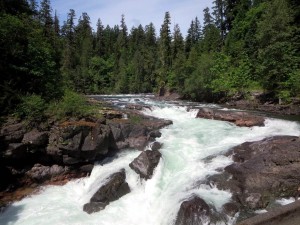Subterranean Water Flows into Oceans May Far Surpass Rivers

The Stamp River in British Columbia’s Stamp River Provincial Park. Photo by David Stanley/flickr
New research suggests that subterranean processes could be sending far more water into the oceans than surface rivers.
According to the study, published recently in the journal Geophysical Research Letters, subterranean water flow into the Atlantic and Indo-Pacific Oceans is some three to four times that of all rivers combined. And just as surprising, a vast amount of water also flows inland from the ocean.
Using radium collection techniques to analyze the flowing and mixing of seawater, the international team were shocked to discover that none of their data made any sense.
It was only after eventually questioning their assumption, that groundwater flow into the ocean was insignificant, that the breakthrough occurred. Subsequent testing of the radium levels in well water proved that huge amounts of water from the oceans were being exchanged with groundwater under the surface.
The action was in the permeable sediments below. It started this whole idea that the continents were connected to the ocean not only by riverine processes, but by submarine processes. I came up with the term subterranean estuary. So just like the surface estuary, it’s the region between the coast and the ocean where freshwater is coming in on one side and seawater is coming in on the other side, they’re mixing, and after chemical reactions, some of that water is expelled back into the ocean. Willard Moore, University of South Carolina
Perhaps even more important is the conclusion that most of the flow of terrestrial nutrients is subterranean. This could bring new light to the understanding of the environmental implications of pollution.


Comment